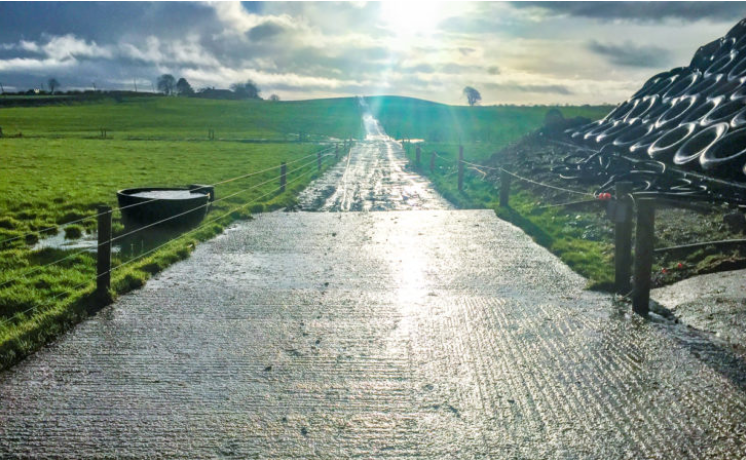Lameness is a very significant problem in many dairy herds. It is associated with a decrease in milk production, impaired reproductive performance and can increase the probability of a cow being culled.
Teagasc estimates a case of it can cost dairy farmers up to €300/cow/year.
There are two major causes of lameness for a dairy cow. At grazing time, we tend to see mechanical lameness, while indoors we will typically see infectious lameness.
The severity of the lameness can tell us a little about how bad the damage is; mild infections or mild bruising will cause mild lameness. Mobility scoring is a system whereby cows are scored on a scale of 0-3 based on their mobility, with zero being good and three being a severely lame cow.
- Speed;
- Rhythm;
- Stride length and foot placement – hind foot should follow front foot;
- Weight bearing;
- The cow’s back should be flat;
- Head position.
Cows scoring either zero or one have acceptable mobility, and – therefore – they only need routine preventative foot trimming.
The goal – when mobility scoring the herd – is to focus on identifying the cows scoring two or three and prioritising these cows for treatment as quick as possible.
- Identify cows with poor mobility in the herd;
- Treat promptly to prevent the problem from getting worse;
- Reduced treatment costs;
- Increased foot health awareness;
- Problem areas such as roadways or other areas can be monitored.
So, when we talk about lameness we really need to decide what is causing a cow or, more importantly, what might be causing a herd to be lame.
Can minerals help prevent lameness?
Speaking to AgriLand, Ronan Gorry from Terra NutriTECH said: “We have worked with a number of our clients over the last four years with lameness.
“While we never say our minerals can fix a lameness problem, we have seen where they have been used with other actions, farmers have got significant results.
“Think about big factors that lead to lameness – both mechanical and infectious. With mechanical lameness we have found our zinc supplementation helps horn growth and produces harder, healthier hooves.
“Also, with zinc playing a role in skin health, immunity of a cow’s foot is better prepared for infections like Mortellaro.
“We feel our products will help the skin immunity and the quality of the hoof horn produced. If farmers combine this with some proactive control, they will see significant improvements in cows’ mobility and healthier feet,” he concluded.
Mechanical lameness
When it comes to mechanical lameness, in Irish grass-based dairy herds the big three are: white line disease; sole ulcers; and bruising. With cows walking on roadways twice daily, and also standing in concrete collecting yards, there is no surprise we see some lameness.
There are two main things we can do on farm to reduce this risk if these are the problems you’re seeing. The first is the surface cows are walking on; this is really important where cows are walking long distances.
There is huge science to getting roadways right and avoiding damage to them. The width of the roadway is very important and also the transition area between roadway and parlour. Try avoid cows bringing stones onto concrete collecting yards as this can really damage feet.
Furthermore, when it comes to preventing mechanical lameness indoors, farmers should try and minimise standing time for cows, ensuring there are plenty of cubicles for cows and space for cows to move around.
The second important aspect we need to look at to reduce mechanical lameness is cow flow and pressure. Cows being pushed hard on roadways, or particularly in collecting yards, will have more stress on their feet.
A cow likes to move slowly and pick their step carefully; rushing cows stops this behaviour and can lead to damaged feet. Farmers will particularly see issues with white line disease in collecting yards where backing gates are used incorrectly to push cows.
Infectious lameness
When it comes to infectious lameness, the two big diseases that are present in Irish dairy herds are fouls and digital dermatitis (Mortellaro) – they both damage the skin around the hoof causing swelling and pain.
The older the lesion, the harder they can be to treat and these old lesions are the reservoirs for infections for the other cows.
Sometimes, a spike indoors occurs because cows are closer together, and also there is the build-up of faeces which can irritate the hoof skin and also contain these bugs.
Ensuring cows’ beds are clean and that each cow has enough space is recommended. Keeping passageways clean and the regular use of footbaths is also recommended to reduce the spread of infection.



